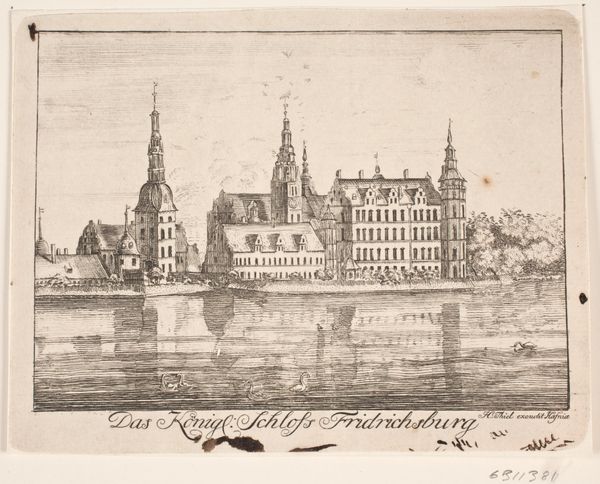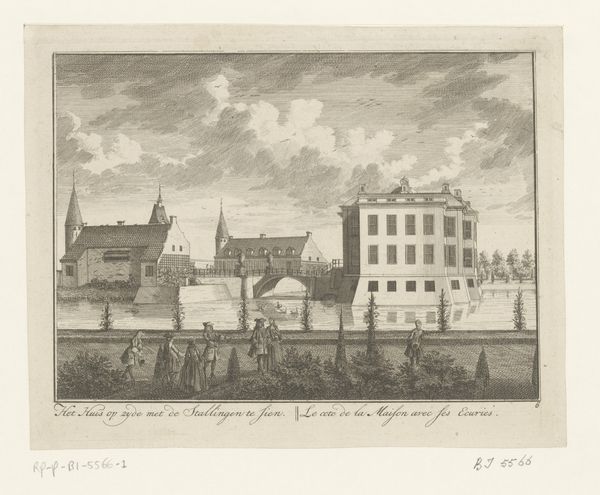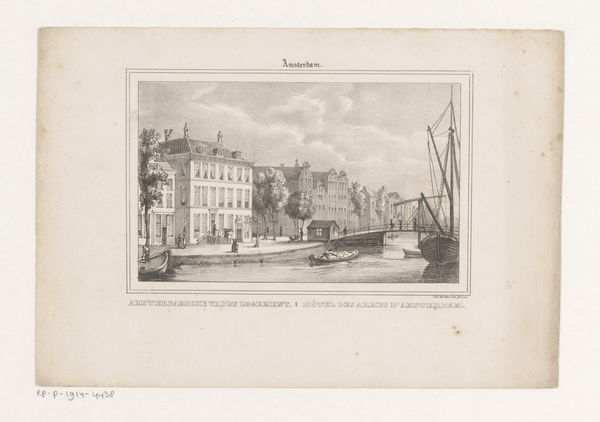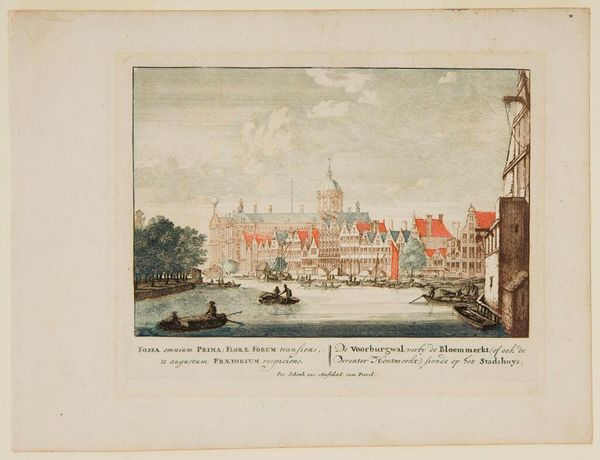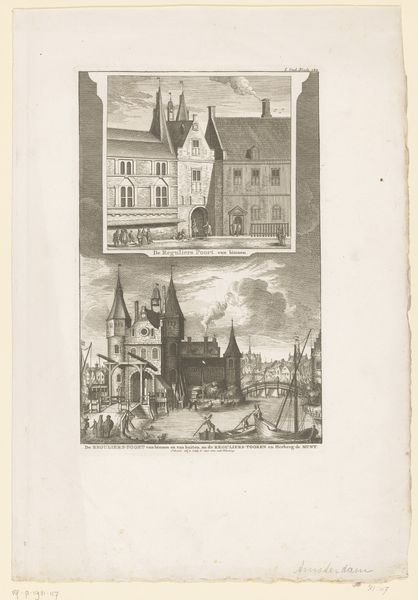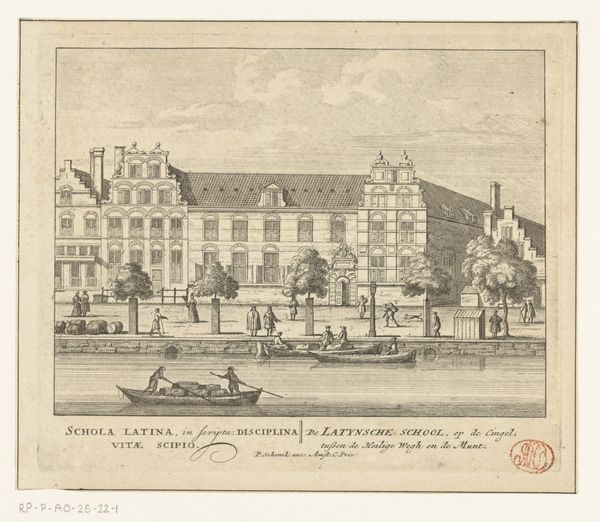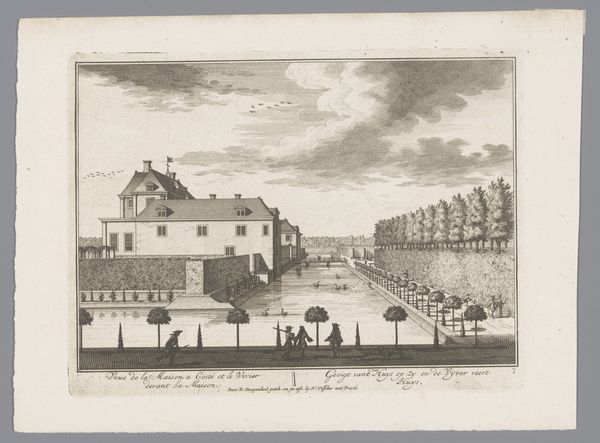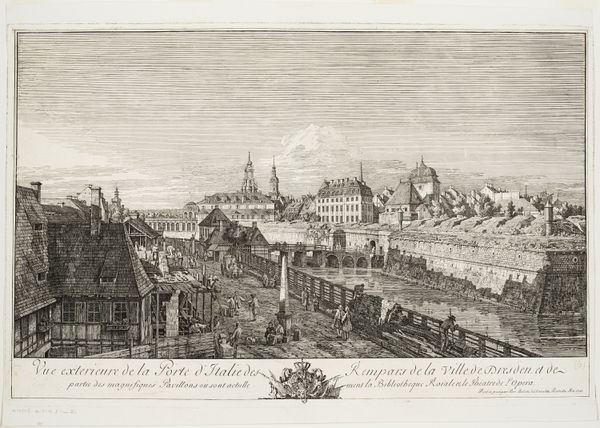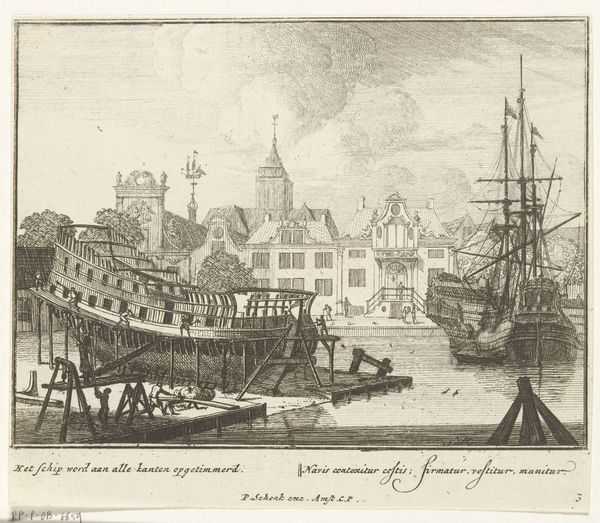
print, engraving
# print
#
landscape
#
romanticism
#
cityscape
#
engraving
Dimensions: height 219 mm, width 276 mm
Copyright: Rijks Museum: Open Domain
Curator: This print, titled "Gezicht op het IJ te Amsterdam" or "View of the IJ in Amsterdam," was created between 1822 and 1824 by Jacob Plügger. It depicts the aftermath of an accident at the Dutch East India Company's warehouse, executed as an engraving. Editor: My initial impression is one of stark contrast. We have this serene waterway juxtaposed with the violent disarray of the collapsed structure. It speaks volumes about the fragility of even the most seemingly stable systems. Curator: Absolutely. Beyond the immediate scene of devastation, this image acts as a powerful symbol of disruption, a break in the expected order. Notice the romanticized cityscape, typically rendered with precision, now bearing this jarring wound. The image also acts as a stark memento mori. Editor: Memento mori, yes. The date etched beneath the image – April 14th, 1822 – feels less like a simple record and more like a memorial, reminding us of the fleeting nature of power and industry. Consider the Dutch East India Company, a symbol of global dominance at the time; its shattered warehouse becomes a potent metaphor. Curator: Precisely. It underscores a broader historical awareness. The etching technique, with its fine lines and attention to detail, almost paradoxically heightens the impact. It’s like the artist is forcing us to confront every splintered beam. Look, too, how even the figures gathered to observe become players in a drama about Dutch imperial decay. Editor: And the Romantic landscape style does an interesting dance here. It usually idealizes nature, yet here it frames a man-made disaster. We're forced to question progress, right? To think about the price of expansion and the ever-present potential for things to fall apart. Curator: I find myself pondering the print’s deeper cultural symbolism. Is it simply a record of an event, or did it tap into growing anxieties about the Dutch East India Company’s future, maybe anticipating shifting colonial realities? I imagine it resonated differently across varied social strata back in its own time. Editor: Perhaps it speaks to something universal as well, even outside the specificity of the Dutch colonial experience. Looking at the shattered beams and the gathered onlookers, I'm reminded of current conversations surrounding climate change, and infrastructure decay, reminding me about human cost. The print functions as a lasting record of not only physical disaster but something far more conceptual. Curator: I agree, reflecting on the print reminds me about themes of loss. The broken architecture in the skyline has evolved to encapsulate shared experiences. Editor: For me, seeing how the disaster touches those figures reminds me of intersectional vulnerability and resilience today, as we navigate climate catastrophes across the globe.
Comments
No comments
Be the first to comment and join the conversation on the ultimate creative platform.
